Flood Damage, Mold and How to Start Rebuilding Your Home
Water is, without a doubt, the most powerful natural force on the planet. It can erode a mountain creating vast caves and caverns, turn massive rocks and minerals into mere sand particles, and worst of all, do a lot of damage to any home.
How prepared can a homeowner really be for potential flooding? Knowing ahead of time what documents your insurance company will ask for, gives you a head start when it’s time to re-build. Here are the basic things you’ll need to know, and the documents you’ll need in case flooding ever occurs in your home.
- DOCUMENTS TO FILE YOUR INSURANCE CLAIM –
- Protect your important irreplaceable documents- this means keep everything in a water-tight and safe place with easy access. As we’ve seen with the recent hurricanes, evacuations are possible, so having all the documents you’ll need all together and in one place, will save you from a lot of hassle later when your insurance company is asking for them.
- Flood insurance information (if you have it)
- Policy declarations page (this states exactly what your policy covers, and what it doesn’t)
- To file with FEMA, you’ll need your social security numbers, annual household income information, any insurance information you have, the address of the damaged home, and the address where you’re located now, a current phone number, routing number for direct deposit into your bank account, and a description of the damages.
- Protect your important irreplaceable documents- this means keep everything in a water-tight and safe place with easy access. As we’ve seen with the recent hurricanes, evacuations are possible, so having all the documents you’ll need all together and in one place, will save you from a lot of hassle later when your insurance company is asking for them.
- If you live in an area prone to natural disasters like Hurricanes and/or Tornados, having a back-up generator, along with food, water and gasoline is a great way to be prepared, especially if there are elderly or young children living in the home.
- DOCUMENT EVERYTHING! We can not express this enough and with enough emphasis.
- TAKE PICTURES of every room, at every angle. Keep all the insurance documents you receive, receipts of everything that you purchase, and all documents from the insurance assessor.
- KEEP RECORDS of phone conversations, if/when possible.
- Remember the names of everyone you speak with, government agencies are notorious for not being able to find the person you spoke with previously, and having to start all over with a new representative.
Once you have made all the necessary filings with your insurance company and/or FEMA it is now time to start rebuilding.
- WHAT YOU WILL NEED TO FIGURE OUT –
- What is your allowance/budget?
- Plan your renovations. Look at the whole scope of what needs to be done, and understand that when the demo begins, unexpected variables that will be additional costs, are very possible.
- What is the severity of the damage?
- All of the flooring that was subject to flood damage should be replaced. It’s important to assess the subfloor. Plywood subfloors may be salvageable if they’re able to fully dry. Cement subfloors should be allowed to dry out completely and then sealed before a new floor covering is installed.
- If you have drywall that was subject to sitting water, 1-2 feet above the water line should be cut and replaced. This is a good time to assess the condition of the interior framing.
- If you have carpeted floors, they have to be removed and the subfloor assessed, you cannot dry them out. Area rugs are a different circumstance, they can be removed from the home and cleaned and dried out, if desired.
- All of the flooring that was subject to flood damage should be replaced. It’s important to assess the subfloor. Plywood subfloors may be salvageable if they’re able to fully dry. Cement subfloors should be allowed to dry out completely and then sealed before a new floor covering is installed.
- Is a restoration company needed?
- This may be something to consider if your home experienced sever water-damage and the growth of mold.
- Who is performing the demolition?
- Is the Insurance company going to do the demolition or is this something you’re planning on doing yourself?
- Where will you stay while renovating?
- Do you have family/friends, does your budget allow for a hotel, or can you reside in the home?
- What is your allowance/budget?
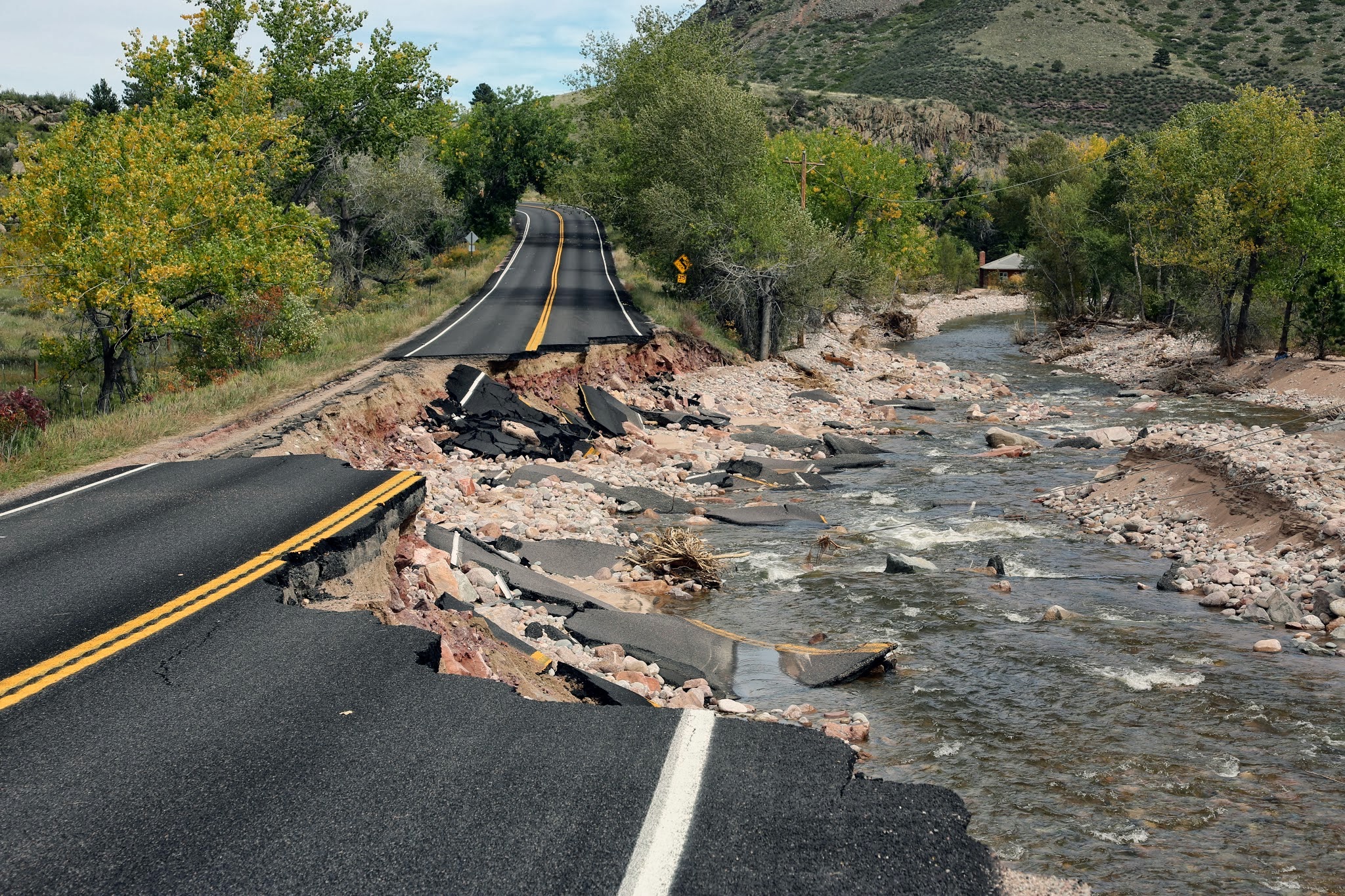
Colorado Floodwater
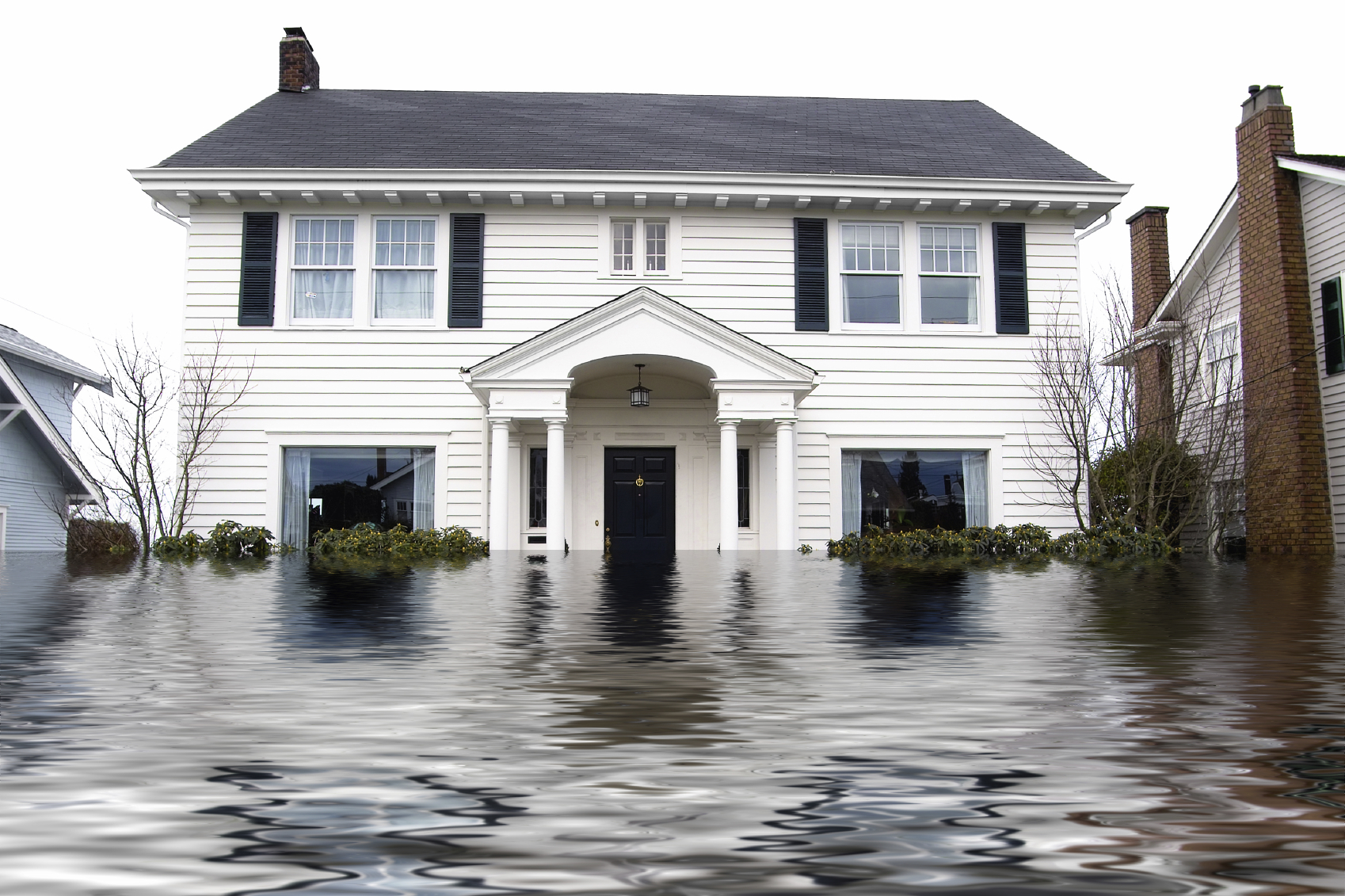
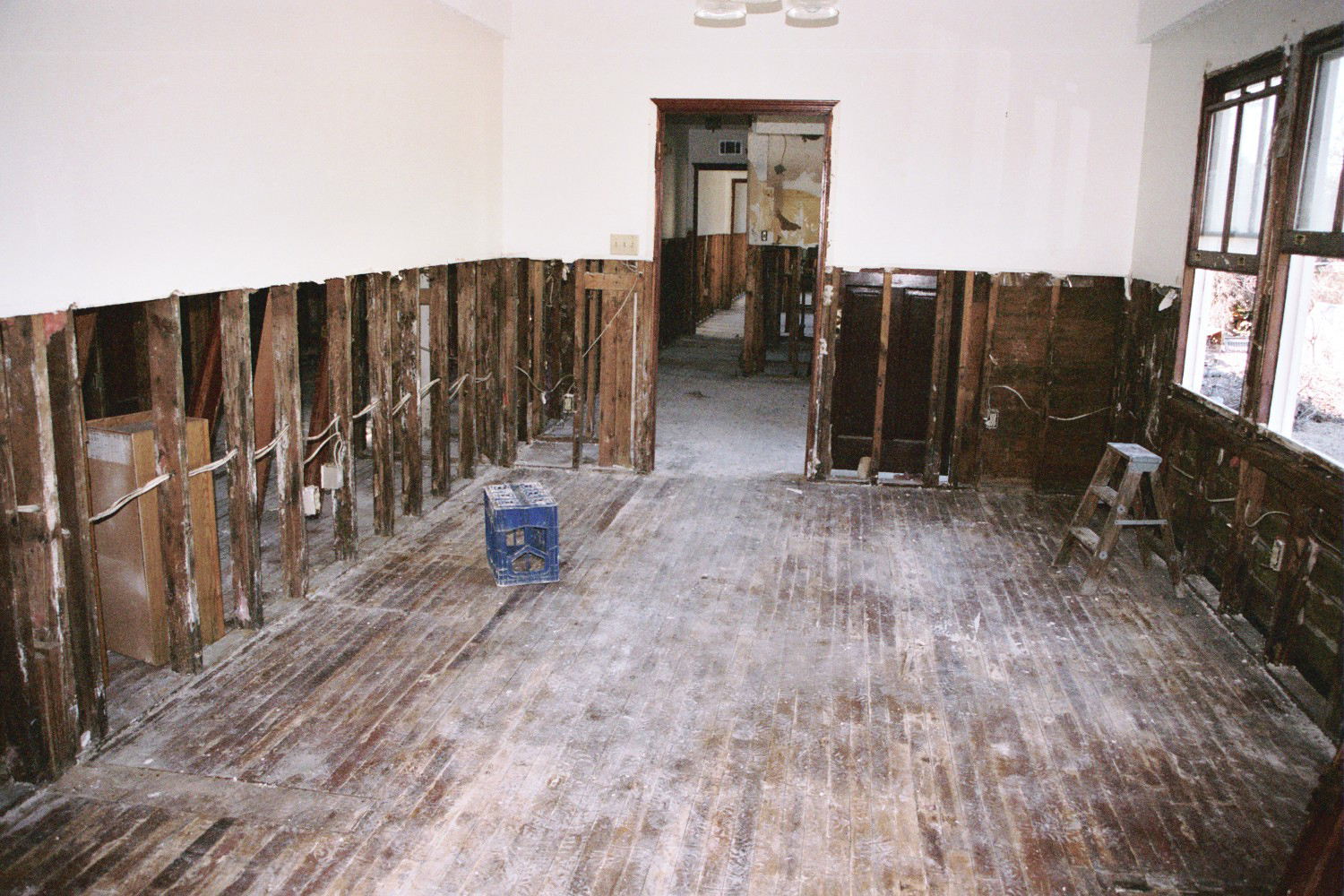
Flood Damage Restoration
There are a lot of different variables when it comes to flood damage inside a home. The extent of the damage that the water causes will depend on a few different things, like:
- WHAT CAUSED THE FLOOD?
– If your home was flooded from Hurricane flood-water, you have to consider that there is probably sewage in that water, making it even more hazardous to your health and damaging to your home.
– If you’ve had some kind of water-pipe burst or break, depending on where in your home it was located, there may be serious widespread interior damage if it’s not caught quickly.
– Another scenario is if there is unknown damage to your roof; even something as small as a nail hole that isn’t properly water-proofed, is a ticking time-bomb. Think of a single nail hole, dripping water for 10 straight years; eventually, the rot, mold and damage will show through to your interior finishes. Have no doubt that if there is a way into your home, water will find it.
- HOW MUCH WATER ACTUALLY SAT IN THE HOME; there’s a huge difference between inches and feet when it comes to rebuilding.
– With inches of water, the flooring and bottom wall trim (base and shoe molding) just might be the only things that need replacing, (if you’re lucky). With feet of water, unfortunately, it’s a whole different can of worms. Everything from the floor, to about a foot or two above the water-line will have to be replaced. That means flooring, base and shoe molding, drywall, door trim, cabinets, built-in shelving, etc…
- HOW LONG DID THE WATER SIT IN YOUR HOME BEFORE IT RECEDED OR WAS REMOVED?
– This is another big factor when assessing the damage. If you’ve had sitting water for days or even longer, (like if you went away on vacation and a pipe burst, or if you were a recent victim of Hurricane Harvey or Irma, and haven’t been able to return to your home) there’s no telling just how deep the damage goes. The hope will be for nothing structural to have been damaged. That includes everything from floor joist systems and subfloors to interior framing. The longer the water sits, the more damage there will be. In most cases, the drywall can be cut and removed, and the interior framing, if wet, can be dried out and saved. It’s important to make sure there is no moisture in the interior structure of the home before the new drywall goes up. Trapping the moisture in will cause long term mold problems which are hazardous to the health of everyone in the home.
- IS YOUR HOME MADE OF WOOD, METAL, OR BLOCK FRAMING?
-This will tell you how deep you need to look into your homes’ structure to ensure the moisture is gone and there’s no chance for mold to grow. If you have unsealed cinderblock that has been sitting in water, it will need to be treated and then sealed before drywall or plaster can go back up, or even if it’s left uncovered. You can think of cinderblock as a hard, cement sponge that simply can’t be squeezed out. Once mold and/or bacteria grow, it needs to be treated and killed to ensure the safety of everyone in the home. The same goes for wood framing. Wood is also porous, and is more susceptible to holding moisture, making it a very suitable place for mold to grow.
Flood Damage and Mold – What to do if you find mold, and how to prevent it after a flood-
If your home has been flooded by hurricane flood-waters, one of the scariest long-term issues is the growth and presence of mold. First, you should know that there are many different types of mold, and some are not harmful at all, yet others, like the well-known “Black Mold” literally produce toxins that are released into the air. There are a handful of types of mold that are most commonly found in homes, and all have the potential of causing health problems. Black mold is the most dangerous of them all, and is mostly identified by its dark black, sometimes greenish color. Mold is also commonly identified by it’s musty smell. That musty smell you’re inhaling is actually the molds’ volatile organic compounds (VOC’s) that it releases into the air. Most of these VOC’s evaporate very quickly, making them less dangerous to a persons health. The toxins, however, that some molds, like Black Mold, produce don’t evaporate quickly and when inhaled, cause serious health problems. Overall, every type of mold should be considered a health hazard and addressed accordingly.
Black mold can literally grow on anything that can hold moisture. That means most of the materials that make up the interior of your home have the potential to grow black mold; everything from wood, drywall, fiberboard, insulation, gypsum board, wallpaper, ceiling tiles, carpet, even lint and dust! To be safe, it’s best to treat and kill any mold you find in your home, period.
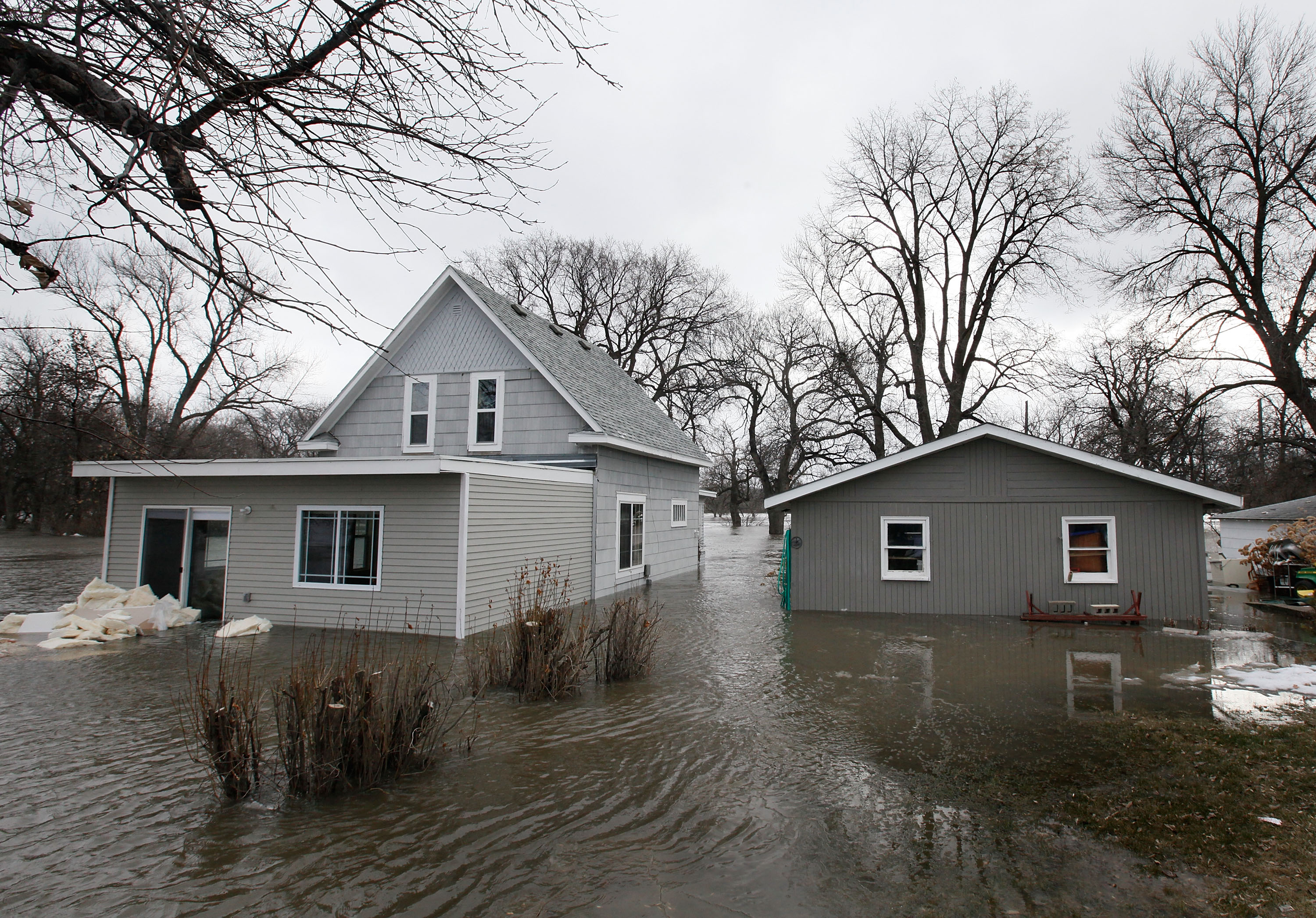
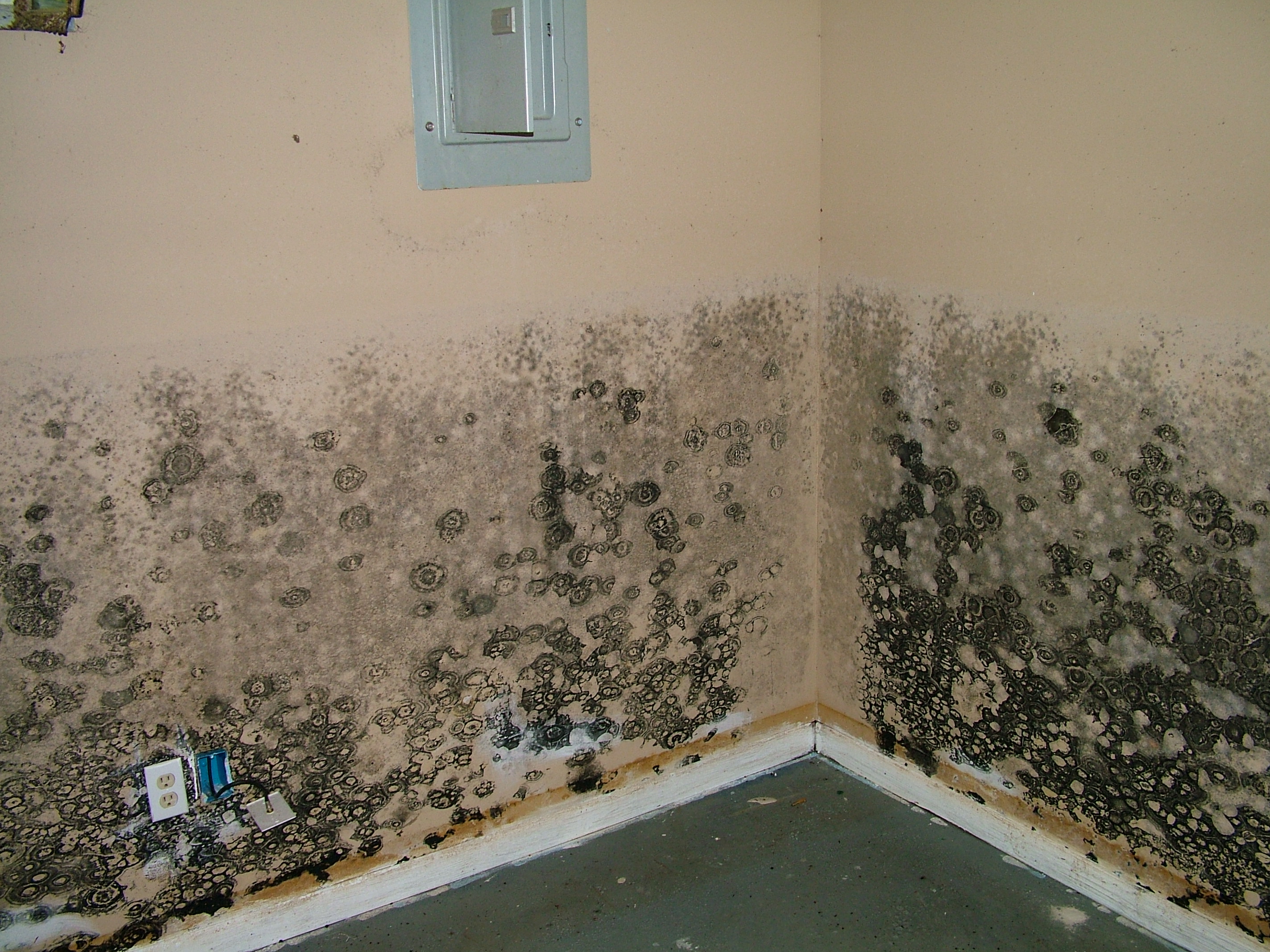
Black Mold on wet drywall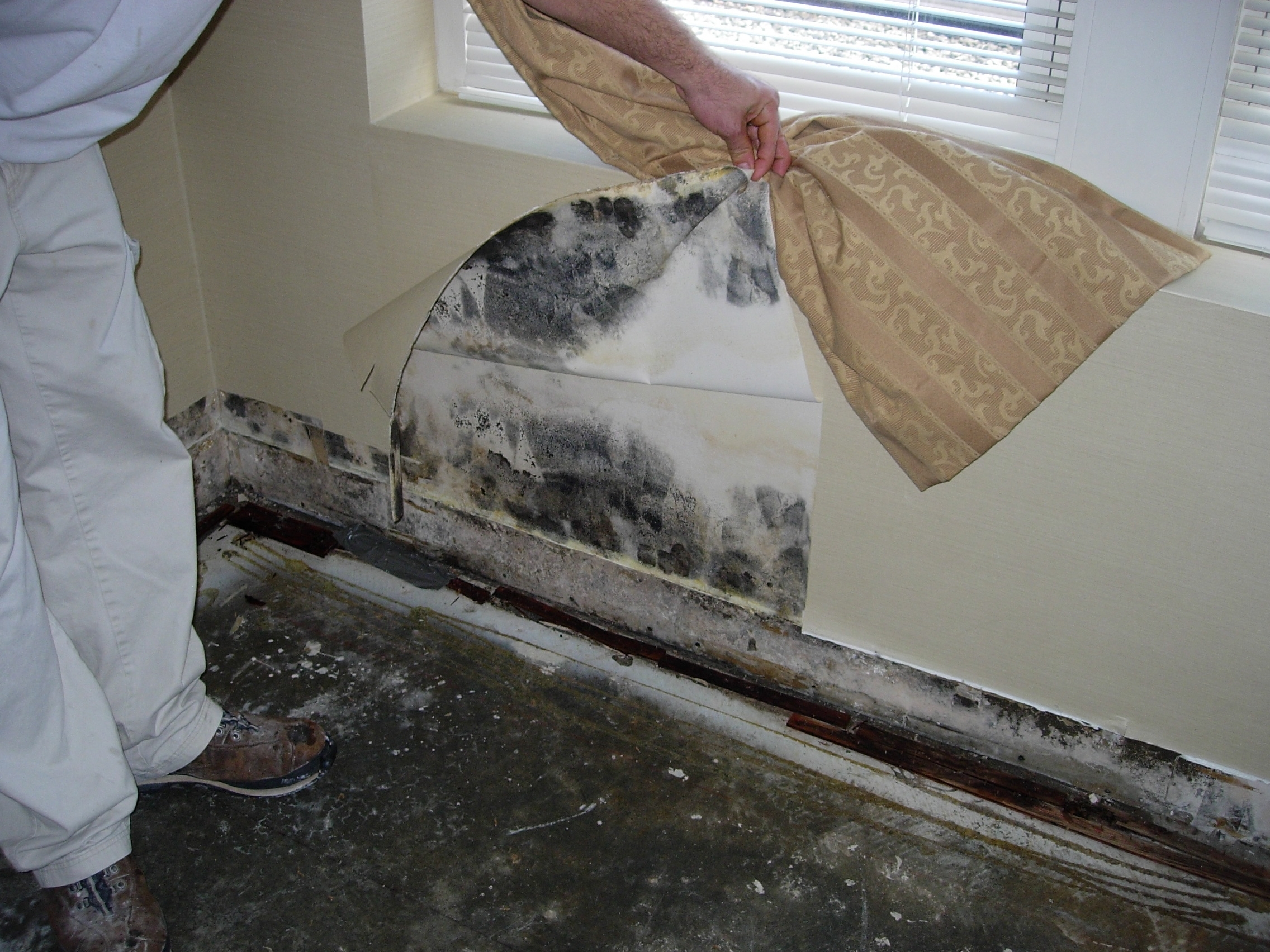
Black mold growing behind wall paper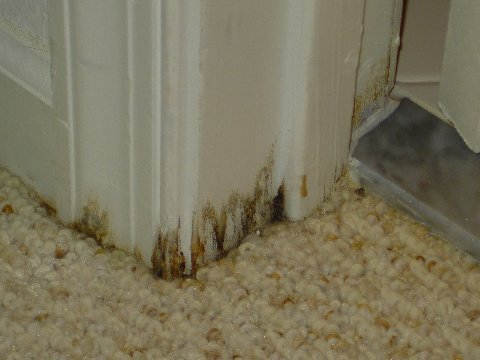
Mold on Door Jam coming from water in Carpet and subfloor
Cleaning up the mold –
The first thing that should be considered is who should do the clean-up/removal of the mold.
Well, this greatly depends on how wide-spread the mold is. If you have a few square feet of mold here and there throughout your home, that’s something that you can probably tackle on your own. If your home has suffered from a large flood, and has had sitting water for a long period of time, which caused a vast amount of mold throughout your home, mold remediation by a professional is the best way to go.
Things to think about when dealing with mold:
- First and foremost – when dealing with the possibility of mold in your home, be safe about your demo and renovations. If you have already assessed that there IS mold in your home make a plan before you go back in.
- Buy safety gear; respirators, gloves and cover-alls
- Invest in a Mold kit, this will tell you if there is the presence of black mold.
- Keep your home well ventilated, if you’re able to smell the mold, it’s possible for you to breath in it’s toxins as well. Respirators are an absolute must!
- In order to control the growth and re-growth of mold, you need to control the moisture in your home. Without the moisture, mold spores have nothing to attach themselves to, and thrive on.
- Reduce indoor humidity by ways of ventilation, dehumidifiers, air conditioning units, bathroom vents, exhaust fans, etc…
- Mold that has grown on hard, non-porous surfaces can be disinfected and wiped off, porous surfaces like ceiling tiles, unsealed cement, wood, etc., will need to be replaced.
- Do not run the HVAC units in your home before you are certain there is no mold buildup inside the unit and ducts. HVAC ducts are well known for condensation, and are a great place for mold to grow.
- Do not paint or caulk over a moldy surface. The paint does not kill or seal the mold, and will peel. If caulking is needed, remove the mold first, and dry thoroughly before applying caulk.
- Mold can and will grow on a wet subfloor, even when tile is installed. If your tile floor was subject to severe flood damage, the tile may appear to be fine once dried off, however, it’s most likely that water has seeped into the subfloor and without a way to escape, it’s now a breeding ground for mold.
You May Also Like
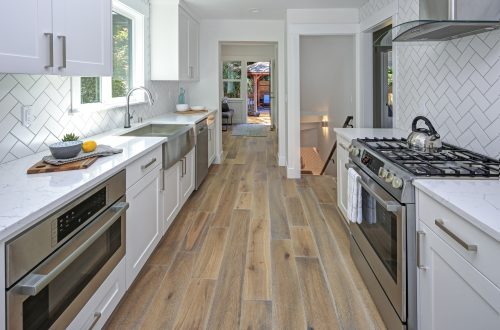
Wide-Plank Hardwood Flooring
December 29, 2019
Hardwood in the Kitchen
November 1, 2019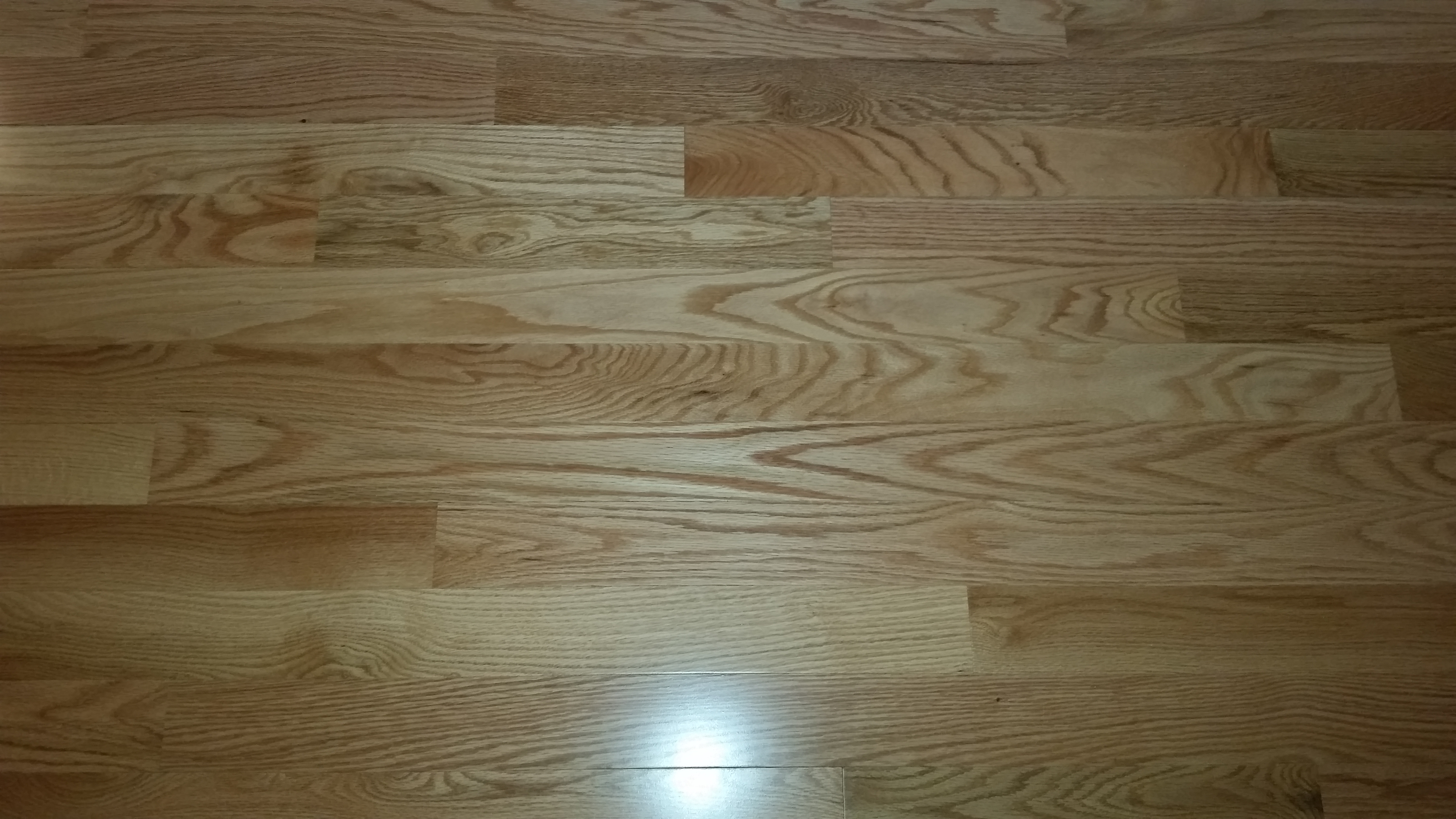
47 Comments
mp3juice download
Very nice write-up. I definitely love this site. Thanks!
Pingback:
Pingback:
Pingback:
Pingback:
Pingback:
Pingback:
Pingback:
Pingback:
Pingback:
Pingback:
Pingback:
Pingback:
Pingback:
Pingback:
Pingback:
Pingback:
Pingback:
Pingback:
Pingback:
Pingback:
Pingback:
Pingback:
Pingback:
Pingback:
Pingback:
Pingback:
Pingback:
Pingback:
Pingback:
Pingback:
Pingback:
Pingback:
Pingback:
Pingback:
Pingback:
Pingback:
Pingback:
Pingback:
Pingback:
Pingback:
Pingback:
Pingback:
Pingback:
Pingback:
Pingback:
Pingback: